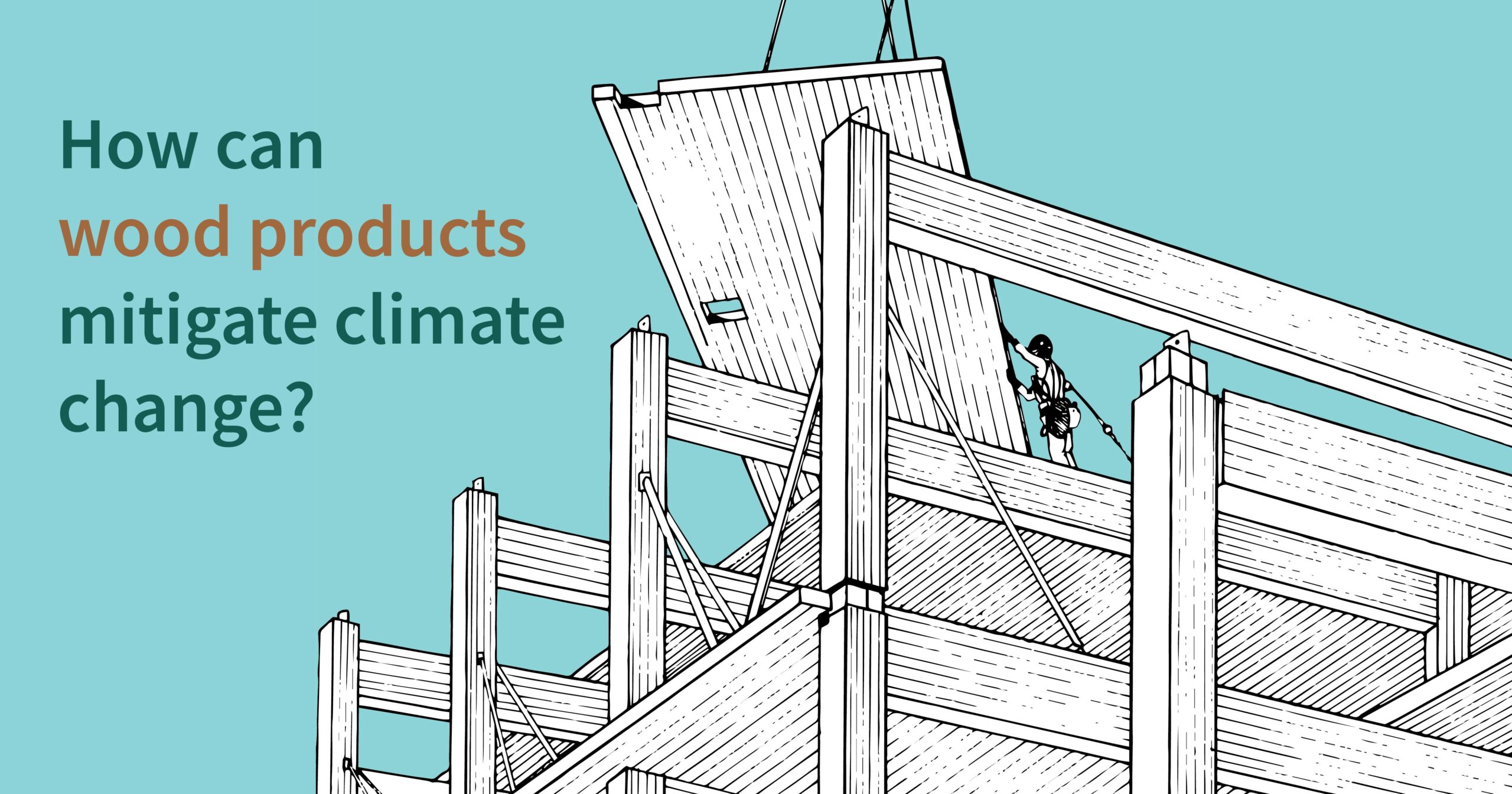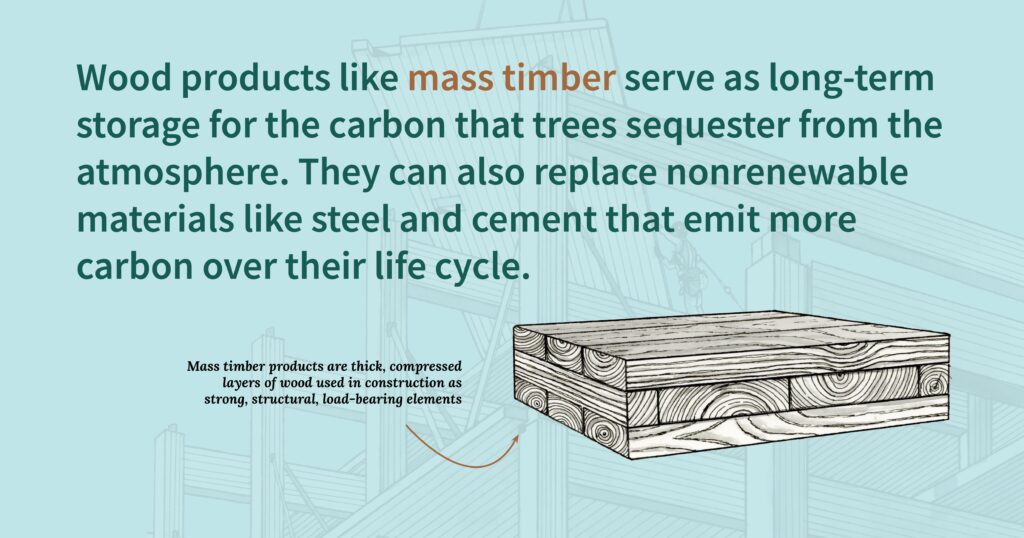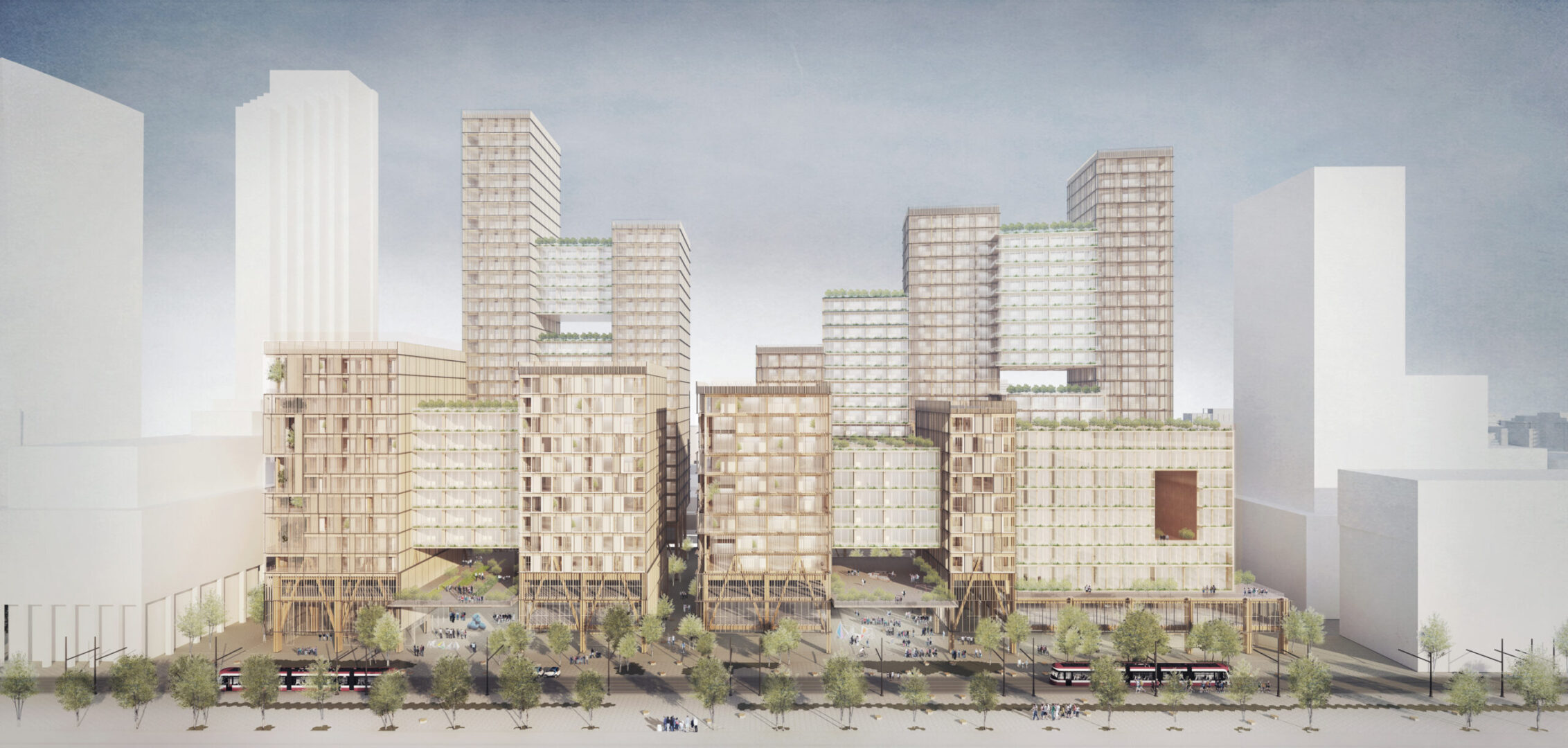Carbon in the Built Environment
Managing for Carbon Across the Entire Forest Supply Chain

Harvested wood products are a critical tool for mitigating climate change and building a sustainable future. Understanding how to optimize the role of forests and forest products requires knowing the factors contributing to carbon flux and how to balance them.
Approximately 50% of the dry weight of a tree is carbon. Trees sequester carbon from the atmosphere and store it as they grow, making forests important for mitigating climate change. Critically, carbon is also be stored outside of forests in wood products made from trees that allow us to meet human needs while storing the carbon sequestered by trees in long-lived products.
The Food and Agriculture Organization estimates that using wood-based building materials instead of other alternative building materials already avoids emissions of 483 million metric tons of CO2 annually—that’s equivalent to the annual emissions of over 100 million cars. In its recent assessments, the International Panel on Climate Change identified harvested wood products (HWPs) as an essential tool for sustainability.
How is it that removing trees from a forest can benefit the climate? Consider the idea of substitution, or the benefits of using renewable materials in place of nonrenewables.
The construction sector currently accounts for nearly 40% of global emissions. The global population is increasing and the total number of buildings worldwide is expected to double by 2060. If development is inevitable, renewable products are essential. Research shows that choosing to build with wood instead of concrete or steel could reduce projected emissions by 9%-50%. Unlike carbon and steel, HWPs take the carbon absorbed from the atmosphere by trees and places it into long-term storage. Then, more trees grow in the newly opened space in the forest, creating a compounding effect for carbon storage.
Managing forests can also help mitigate the emissions from tree mortality. Threats like wildfire and disease are endangering our forests, and using science-based management can help create forest structures that are more resilient to these threats.
When obtained by science-based, responsible forest management, HWPs provide:
- a more sustainable substitute for nonrenewable materials with higher emissions.
- an opportunity to create resilient forests less susceptible to mortality.
- an important solution to keeping forests as forests.
We're #forestproud to showcase the newest SAF position statement on Carbon in the Built Environment. This position statement focuses on the capacity for harvested wood products (HWPs) to mitigate climate change through science-based, sustainable forest management.


